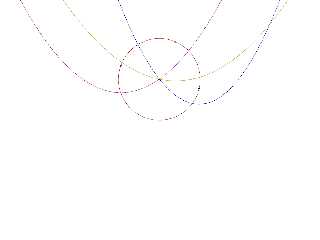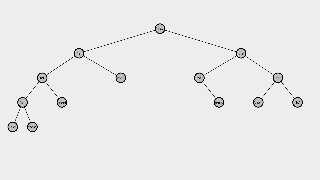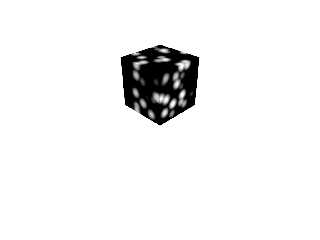 |
 |
|
 |
|
 |
|  |
|  |
|
 |
|
 |
|  |
|  |
|
 |
"ingo" <nomail@nomail> wrote:
> "Bald Eagle" <cre### [at] netscape net> wrote:
>
> > These "computer science" papers are all shit
>
> Have you tried a search engine lately? Top 20 lists ... Stupid AI's ....
>
> ingo <ducks and hides>
Yeah - they're all changing - for the worst.
https://www.youtube.com/watch?v=48AOOynnmqU
I used to used duck duck go for a bit - until they sold out.
Then I switched primarily to Brave, but they stopped having useful search
results.
I find myself using Yandex a lot.
It's painful to have lived through "the golden age of the internet" and know
that all that stuff is out there ---- somewhere.
The other thing that I find strange is that I'll get a list of search results,
and when I click on one of the top ones, the site is nonexistent. So then
what's the result doing in the list? How do I have an image thumbnail that goes
along with it, but can't get anywhere to see the image???
It's getting really weird. net> wrote:
>
> > These "computer science" papers are all shit
>
> Have you tried a search engine lately? Top 20 lists ... Stupid AI's ....
>
> ingo <ducks and hides>
Yeah - they're all changing - for the worst.
https://www.youtube.com/watch?v=48AOOynnmqU
I used to used duck duck go for a bit - until they sold out.
Then I switched primarily to Brave, but they stopped having useful search
results.
I find myself using Yandex a lot.
It's painful to have lived through "the golden age of the internet" and know
that all that stuff is out there ---- somewhere.
The other thing that I find strange is that I'll get a list of search results,
and when I click on one of the top ones, the site is nonexistent. So then
what's the result doing in the list? How do I have an image thumbnail that goes
along with it, but can't get anywhere to see the image???
It's getting really weird.
Post a reply to this message
|
 |
|  |
|  |
|
 |
|
 |
|  |
|  |
|
 |
On 22/09/2023 02:37, Bald Eagle wrote:
> I have coded the first one, but it doesn't work, because I probably messed up my
> push/splice macros, and I have to work out the array indices, because those are
> going awry as always. :/
maybe this inc file can help you?
--
Kurtz le pirate
Compagnie de la Banquise
Post a reply to this message
Attachments:
Download 'utf-8' (7 KB)
|
 |
|  |
|  |
|
 |
|
 |
|  |
|  |
|
 |
kurtz le pirate <kur### [at] gmail com> wrote:
> maybe this inc file can help you?
Yes Sir, that would probably help me avoid debugging THAT part, and see what
else I've buggered up.
Thanks - that's very nice little collection of very useful macros! :)
- BW com> wrote:
> maybe this inc file can help you?
Yes Sir, that would probably help me avoid debugging THAT part, and see what
else I've buggered up.
Thanks - that's very nice little collection of very useful macros! :)
- BW
Post a reply to this message
|
 |
|  |
|  |
|
 |
|
 |
|  |
|  |
|
 |
kurtz le pirate <kur### [at] gmail com> wrote:
> maybe this inc file can help you?
One thing that I did notice is that I'm splicing out array entries until I have
an empty array.
That was triggering an invalid array size error, which I fixed / worked around
by doing:
#if (newSize <= 0)
#local tmpArray = array;
#else
#local tmpArray = array[newSize]
#end
and
#if (newSize <= 0)
#declare thisArray = array;
#else
#declare thisArray = array[newSize]
#end
Maybe do some further testing and see what you think, then update that last
macro.
- BW com> wrote:
> maybe this inc file can help you?
One thing that I did notice is that I'm splicing out array entries until I have
an empty array.
That was triggering an invalid array size error, which I fixed / worked around
by doing:
#if (newSize <= 0)
#local tmpArray = array;
#else
#local tmpArray = array[newSize]
#end
and
#if (newSize <= 0)
#declare thisArray = array;
#else
#declare thisArray = array[newSize]
#end
Maybe do some further testing and see what you think, then update that last
macro.
- BW
Post a reply to this message
|
 |
|  |
|  |
|
 |
|
 |
|  |
|  |
|
 |
Alrighty.
I managed to work through a bunch of the code and twiddle this and that until I
got it to "work" and pretty much fill the screen with selected points.
The first issue that I ran into was that I was doing some kind of "screen size
math" which was just messing everything up, so I'm just using the whole image
resolution.
Then I managed to get a bunch of cycles to function, but the algorithm would
exit early - sometimes after only 7 cycles.
I added some logic to break out of the nested loops, and then I expanded the
neighbor search to a 5x5 grid, as suggested/explained/illustrated by Sebastian
Lague.
It still runs forever without a bailout value set, instead of exhausting the
Active array and properly exiting the macro.
Finally, the points are clustered much too closely - I ought to be able to draw
circles with radius R that don't overlap, and the attached image is using
circles that are only R/4.
Clearly POV-Ray is very different than Javascript or C#, or I'm really in a long
stretch of brain-fry or code blindness and am missing something very simple but
utterly crucial.
- BW
Post a reply to this message
Attachments:
Download 'poisson-disc sampling.pov.txt' (7 KB)
|
 |
|  |
|  |
|
 |
|
 |
|  |
|  |
|
 |
On 23/09/2023 01:30, Bald Eagle wrote:
>
> One thing that I did notice is that I'm splicing out array entries until I have
> an empty array.
>
> That was triggering an invalid array size error, which I fixed / worked around
> by doing:
>
> #if (newSize <= 0)
> #local tmpArray = array;
> #else
> #local tmpArray = array[newSize]
> #end
>
> and
>
> #if (newSize <= 0)
> #declare thisArray = array;
> #else
> #declare thisArray = array[newSize]
> #end
>
>
> Maybe do some further testing and see what you think, then update that last
> macro.
>
AAs always, that's a very good remark on your part.
I've never thought about the cases where the arrays are empty.
I'm going to apply your suggestions, correct my macros and
run more in-depth tests.
--
Kurtz le pirate
Compagnie de la Banquise
Post a reply to this message
|
 |
|  |
|  |
|
 |
|
 |
|  |
|  |
|
 |
"Bald Eagle" <cre### [at] netscape net> wrote:
So, I played around with starting to implement the Fortune algorithm for the
Voronoi diagram, but I also need a DCEL and a red-black tree data structure, a
balanced binary tree, or similar.
I got a bunch of points and a scan line, and managed to plot all of the
parabolas and kind of draw some of the Voronoi edges by looping all the way down
the screen and plotting all of the intersection points.
It took a long time to spot a pair of missing parentheses that I should have
had.
Repeat after me: -b +/- sqrt (b*b -4*a*c) ***ALL*** over 2*a
which makes it (-b +/- sqrt (b*b -4*a*c)) / 2*a
Someone said it was easier to code the Bowyer-Watson algorithm, so I might try
to code both in parallel and see which one (if any) I get to work first.
For that, I need to test if a point lay inside of a triangle's circumcircle, and
luckily someone had a nice little simple compact method for doing so.
I always find it fascinating how many geometric questions can be answered just
by simple arithmetic of point coordinates, be it sum, difference,
multiplication, vdot, vcross, or a matrix determinant.
We would be served well by compiling a list of such useful tricks and
maintaining that on a wiki page, or in the documentation, or as a periodically
updated (with version number and date) include file.
I also find these simple inside/outside test renders to be unusually visually
appealing for some reason. Attached is the testing of 5000 points against a
triangle's circumcircle.
If there was a band named POV-Ray (a college friend had a band named Man Ray)
this would make a good album cover. :D
- BE net> wrote:
So, I played around with starting to implement the Fortune algorithm for the
Voronoi diagram, but I also need a DCEL and a red-black tree data structure, a
balanced binary tree, or similar.
I got a bunch of points and a scan line, and managed to plot all of the
parabolas and kind of draw some of the Voronoi edges by looping all the way down
the screen and plotting all of the intersection points.
It took a long time to spot a pair of missing parentheses that I should have
had.
Repeat after me: -b +/- sqrt (b*b -4*a*c) ***ALL*** over 2*a
which makes it (-b +/- sqrt (b*b -4*a*c)) / 2*a
Someone said it was easier to code the Bowyer-Watson algorithm, so I might try
to code both in parallel and see which one (if any) I get to work first.
For that, I need to test if a point lay inside of a triangle's circumcircle, and
luckily someone had a nice little simple compact method for doing so.
I always find it fascinating how many geometric questions can be answered just
by simple arithmetic of point coordinates, be it sum, difference,
multiplication, vdot, vcross, or a matrix determinant.
We would be served well by compiling a list of such useful tricks and
maintaining that on a wiki page, or in the documentation, or as a periodically
updated (with version number and date) include file.
I also find these simple inside/outside test renders to be unusually visually
appealing for some reason. Attached is the testing of 5000 points against a
triangle's circumcircle.
If there was a band named POV-Ray (a college friend had a band named Man Ray)
this would make a good album cover. :D
- BE
Post a reply to this message
Attachments:
Download 'circumcircle.png' (348 KB)
Preview of image 'circumcircle.png'

|
 |
|  |
|  |
|
 |
|
 |
|  |
|  |
|
 |
Re: Voronoi Furtune algorithm
"Bald Eagle" <cre### [at] netscape net> wrote:
> "Bald Eagle" <cre### [at] netscape net> wrote:
> "Bald Eagle" <cre### [at] netscape net> wrote:
> So, I played around with starting to implement the Fortune algorithm for the
> Voronoi diagram, but I also need a DCEL and a red-black tree data structure, a
> balanced binary tree, or similar.
Update here - jr has been leading me by the nose-hairs to get the binary tree /
Red-Black tree coded up, and hopefully we (mostly he) will have some code we can
start to play with soon.
> Someone said it was easier to code the Bowyer-Watson algorithm, so I might try
> to code both in parallel and see which one (if any) I get to work first.
Admittedly, I have not started on that one yet.
The RB-tree and the DCEL are used for storing the data for/from the Fortune
algorithm, and that seems to be mostly the results of "site events" and "circle
events".
The site event seems trivial (scanline is the same height as a voronoi seed),
and so I worked out the detection of a circle event (the intersection of 3
parabolas) to the best of my meager ability.
Shown is the point where the scanline generates a circle event, where the seeds
are all equidistant from each other and the scanline, and so all lie on a
circumcircle, with the Voronoi vertex at the center.
- BW net> wrote:
> So, I played around with starting to implement the Fortune algorithm for the
> Voronoi diagram, but I also need a DCEL and a red-black tree data structure, a
> balanced binary tree, or similar.
Update here - jr has been leading me by the nose-hairs to get the binary tree /
Red-Black tree coded up, and hopefully we (mostly he) will have some code we can
start to play with soon.
> Someone said it was easier to code the Bowyer-Watson algorithm, so I might try
> to code both in parallel and see which one (if any) I get to work first.
Admittedly, I have not started on that one yet.
The RB-tree and the DCEL are used for storing the data for/from the Fortune
algorithm, and that seems to be mostly the results of "site events" and "circle
events".
The site event seems trivial (scanline is the same height as a voronoi seed),
and so I worked out the detection of a circle event (the intersection of 3
parabolas) to the best of my meager ability.
Shown is the point where the scanline generates a circle event, where the seeds
are all equidistant from each other and the scanline, and so all lie on a
circumcircle, with the Voronoi vertex at the center.
- BW
Post a reply to this message
Attachments:
Download 'circleeventdetection.png' (42 KB)
Preview of image 'circleeventdetection.png'

|
 |
|  |
|  |
|
 |
|
 |
|  |
|  |
|
 |
hi,
"Bald Eagle" <cre### [at] netscape net> wrote:
> Re: Voronoi Furtune algorithm
> ...
> Update here - jr has been leading me by the nose-hairs ...
_that's_ what they were, eh ?! </grin>
> to get the binary tree / Red-Black tree coded up, and hopefully we (mostly he) will
have some code we can
> start to play with soon.
to tease..
regards, jr. net> wrote:
> Re: Voronoi Furtune algorithm
> ...
> Update here - jr has been leading me by the nose-hairs ...
_that's_ what they were, eh ?! </grin>
> to get the binary tree / Red-Black tree coded up, and hopefully we (mostly he) will
have some code we can
> start to play with soon.
to tease..
regards, jr.
Post a reply to this message
Attachments:
Download '231022-be.png' (62 KB)
Preview of image '231022-be.png'

|
 |
|  |
|  |
|
 |
|
 |
|  |
|  |
|
 |
Made some progress sorting out the whole "sparse convolution noise".
Probably don't need to pursue this part any further until i see how it works in
the whole texture-generating chain of algorithms.
Post a reply to this message
Attachments:
Download 'sparseconvolutionnoise.png' (33 KB)
Preview of image 'sparseconvolutionnoise.png'

|
 |
|  |
|  |
|
 |
|
 |
|  |




![]()